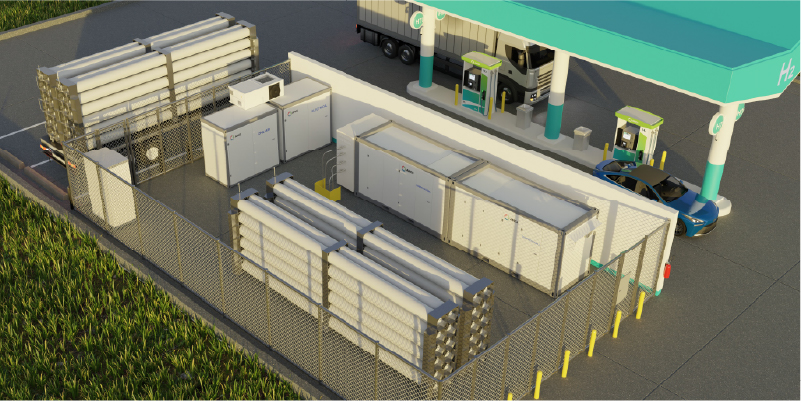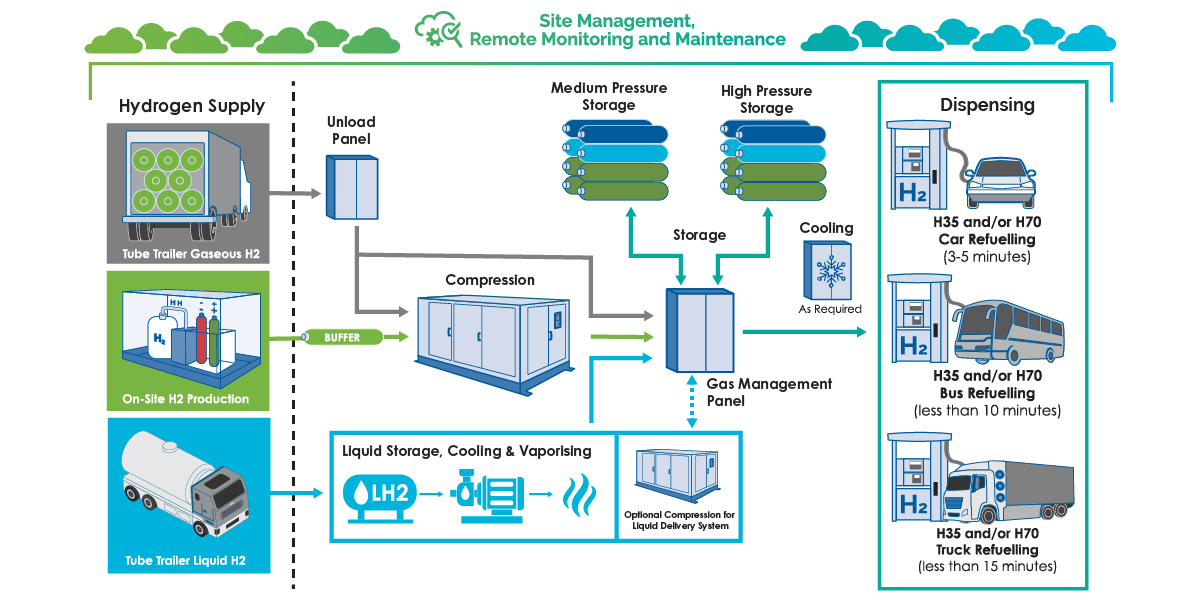State-of-the-Art Solutions to Meet Your Net-Zero Goals
- Modular, containerized solutions for plug and play deployment, even where space is limited.
- Cloud connectivity via central site controller for remote monitoring, reporting, energy management and preventative maintenance.
- Flexible around different hydrogen production or supply models.
- Configurable to serve a wide range of applications across public and private refueling locations.
- Compliant with SAE J2601, SAE J2601-2, and SAE J2601-5 fueling protocols for safe refueling of light, medium and heavy duty vehicles.
- Ready to meet to meet all applicable regulatory and industry certifications by region.
Your Partner for the Journey

Expertise and Proven Reliability
Gilbarco Veeder-Root’s 150+ years in retail fueling combines with ANGI’s 40+ years in compressed gas solutions to deliver an innovative and reliable refueling station.

Maximum Uptime
Designed for maximum serviceability and uptime, backed by our extensive service & maintenance network.

Consultative Station Design
Our Hydrogen Specialists work with you to design your station according to your current and future needs.

Cloud Connectivity
Cloud connectivity via a central site controller for remote monitoring, reporting, energy management and preventative maintenance.
System Components

Dispensing
Delivers hydrogen fuel to vehicles at either 350 bar or 700 bar. User friendly interface for a familiar refueling experience.

Gas Management Panel
The interface between system components which controls the flow of gas on the station.

Storage
Above ground high pressure storage cylinders. Available in 500 bar or 1000 bar, and in multiples depending on your site throughput.

H2 Cooling
Chills gas warmed during the compression cycle(s) ready for storage and dispensing.

Hydrogen Powered Vehicle
Hydrogen is dispensed into hydrogen tanks on the vehicle powered by either ICE (Internal Combustion Engine) or FCEV (Fuel Cell Electric Vehicle)

ANGI Portal
Provides real-time & historical insight to equipment performance & predictive analytics to control costs, and provide industry leading uptime.


